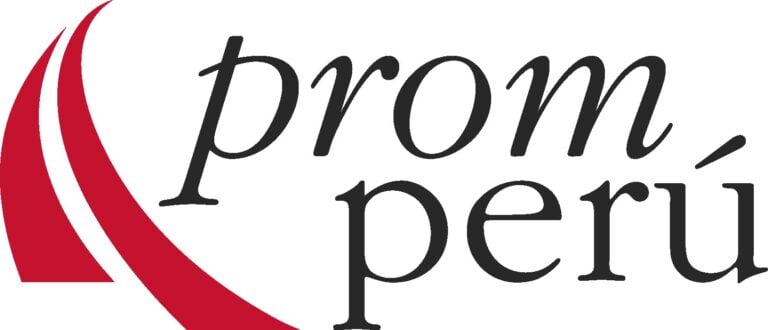We adhere to strict standards of editorial integrity to help you make decisions with confidence. Some or all links contained within this article are paid links.
Most seniors would like to consider their senior living community a safe haven. But sometimes, these properties turn out to be money traps.
That’s the precarious situation Martha Bray, an 84-year-old Vietnam veteran, found herself in after 10 years of living at River Glen of St. Charles. When the senior living community near Chicago was acquired by two investment companies, they swiftly raised costs. Bray told NBC News her monthly maintenance surged by 365%, from $1,395 to $6,500.
Unable to pay, Bray decided to move out — receiving only 75% of the entry fee she paid to move in. She estimates her total loss was $100,000.
Trending Now
- Thanks to Jeff Bezos, you can now become a landlord for as little as $100 — and no, you don’t have to deal with tenants or fix freezers. Here’s how
- I’m 49 years old and have nothing saved for retirement — what should I do? Don’t panic. Here are 6 of the easiest ways you can catch up (and fast)
- Dave Ramsey warns nearly 50% of Americans are making 1 big Social Security mistake — here’s what it is and 3 simple steps to fix it ASAP
She told NBC News, “your money is not safe.”
Many seniors are exposed to similar risks when they move into these communities. Here’s why the industry’s reputation is getting increasingly shaky.
Private equity’s invasion
Bray’s story is not unique. The same factors that make senior living facilities valuable to many families are also what make them attractive to investors. Elevated rents, recurring revenue and the nation’s aging population have made this a lucrative asset class for private equity firms.
Eight of the 50 largest operators in the U.S. senior housing space were private equity firms, according to the American Seniors Housing Association’s (ASHA) 2024 annual report.
Private equity’s influence could expand further in the years ahead. A survey of seniors housing trends by global real estate investment firm JLL showed that 78% of institutional investors plan to expand their investments in senior care facilities.
“Opportunities exist for investors to acquire high-quality real estate at below replacement cost,” according to the 2025 report. The Center for Medicare Advocacy said the impact of private equity ownership can be “significant and troubling” for facility residents.
According to their analysis, when properties were taken over by a private equity firm in Iowa, they received lower overall and health inspection ratings, had fewer nursing staff, faced more abuse citations, incurred higher federal civil monetary penalties and experienced more payment denials for new admissions.
Put simply, some investment firms may be incentivized to put profits and shareholder returns above the interests of vulnerable seniors. If you or your loved ones live in such facilities or are considering moving in, you should take some steps to protect yourself.
Read more: Here are 5 ‘must have’ items that Americans (almost) always overpay for — and very quickly regret. How many are hurting you?
Protect yourself and your loved ones
There are several ways you and your family can reduce the financial risks involved with moving into a senior living community.
Before signing up, make sure you review the contract carefully and consider having the terms reviewed by a lawyer. You should also try to find out which entity owns the property you or a loved one is considering.
There are minimal disclosure requirements for senior living property transactions, so it won’t necessarily be easy to find out whether a facility is owned by a private equity firm, but the Centers for Medicare & Medicaid Services (CMS) offers some limited information on its website about “affiliated entity performance” that could help.
Last year, Democratic Senators Ed Markey and Elizabeth Warren introduced the Corporate Crimes Against Health Care Act, which aims to “root out corporate greed and private equity abuse in the health care system.” At the time of writing, the act has been referred to the Committee on Finance after two readings in the Senate.
Grow your retirement cushion
Beyond policy fixes, you can also take steps to safeguard your retirement finances. After all, the more prepared you are for unforeseeable expenses, the more likely you are to avoid ending up in a scenario like Bray’s.
When it comes to picking and choosing your retirement investments, alternative assets can provide stability and resilience, especially in periods of market volatility.
For instance, a report by First National Realty Partners found that in times of market stress, high-quality properties can be acquired at a discount. After all, real estate is one avenue that can safeguard your wealth, but not everyone wants to take on a 30-year mortgage.
FNRP allows accredited individual investors with a minimum investment of $50,000 to access institutional-quality commercial real estate investments — without the legwork of finding deals themselves.
FNRP has relationships with the nation’s largest essential-needs brands, such as Kroger, Walmart and Whole Foods. And since these retailers provide necessities, they tend to still perform well during times of economic volatility and can act as a hedge against inflation.
You can engage with experts, explore available deals and easily make an allocation, all in FNRP’s personalized portal.
Another alternative asset beloved by the wealthy is art. Historically, art has been used to store value away from the ups and downs of the stock market, but the buy-in for pieces that appreciate well over time has been out of reach for most investors.
Now, Masterworks is opening up the door for more investors to get into this market-resilient asset. You can invest in fractional shares of iconic paintings from artists such as Picasso, Basquiat and Banksy — depending on availability.
Masterworks’ expert team has already exited 23 offerings to date, with investors seeing net annualized returns such as +17.6%, +17.8%, and +21.5% among assets held for longer than one year. You can click here to start diversifying your portfolio. See important Regulation A disclosures at Masterworks.com/cd.
Finally, gold is another alternative asset with a strong reputation for its safe-haven potential. Year-to-date, gold has seen strong performance even during April’s tariff-driven S&P 500 dip.
What’s more, JP Morgan Chase estimates that the yellow precious metal could strike highs of $4,000 per ounce by the second quarter of 2026 if current trends continue.
With Priority Gold, you can invest toward your retirement with a gold IRA, which combines the tax benefits of an IRA and the inflation-hedging benefits of investing in gold.
When you make a qualifying purchase with Priority Gold, you can also receive up to $10,000 in silver for free. If you’re curious if this is the right investment for you, you can download their 2025 guide on investing in precious metals for free.
What to read next
- Robert Kiyosaki warns of a ‘Greater Depression’ coming to the US — with millions of Americans going poor. But he says these 2 ‘easy-money’ assets will bring in ‘great wealth’. How to get in now
- The ultrarich monopoly on prime US real estate is over — use these 5 golden keys to unlock passive rental income now (with as little as $10)
- This tiny hot Costco item has skyrocketed 74% in price in under 2 years — but now the retail giant is restricting purchase. Here’s how to buy the coveted asset in bulk
- Want an extra $1,300,000 when you retire? Dave Ramsey says this 7-step plan ‘works every single time’ to kill debt, get rich in America — and that ‘anyone’ can do it
Stay in the know. Join 200,000+ readers and get the best of Moneywise sent straight to your inbox every week for free. Subscribe now.
This article provides information only and should not be construed as advice. It is provided without warranty of any kind.


